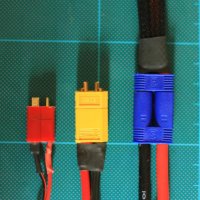Breezemont
Member
If you tilt the bullet 45 degrees and put the tip of the iron in the hole and feed the solder through the top next to the wire that works well too.On the EC5 bullet connectors there is also a small holde on the side. Most of the time when soldering the wire onto the connector this is where the solder spills out. I now always make sure when the bullet connector is inbetween the wood panels the hole is blocked by the wood so the solder does not spill out. This reduces a lot less greif trying to remove excess solder on the outside of the connector.
My first try I also managed to fit to the wrong bullet connector in the wrong housing. I did wonder why it seemed so tight lol. So the last lesson is to make sure you are fitting the right housing on the right bullet connectors!
Of course, like Jes said, with A.P.P. it's simply "crimp, crimp, snap, snap" and you're done.
No "male/female" issue either. That's actually what pushed me over the edge, I copped a space and soldered on about 8 sets of ESC bullets backwards (female vs male), the next day I ordered a bunch of APP and haven't looked back.
The housings are easy to remove and re-use as well. I'm a big fan.
Anyone want to buy a big bag of used EC3's and bullets?
Last edited by a moderator:

